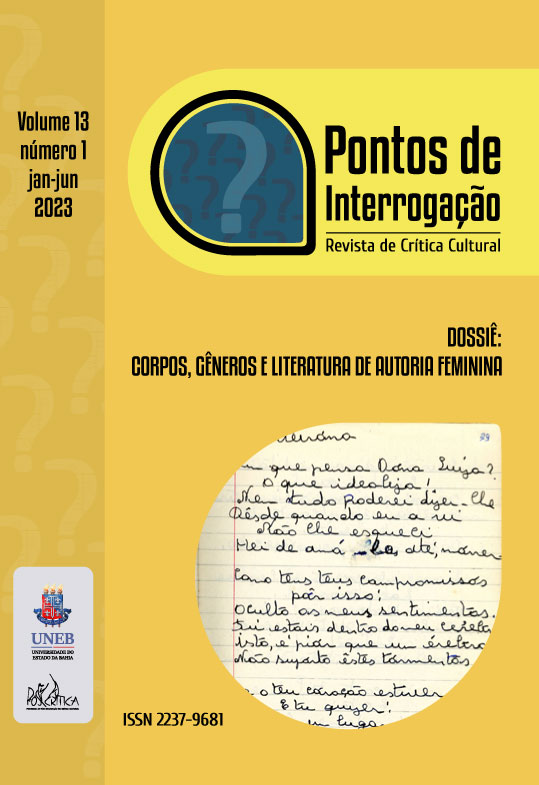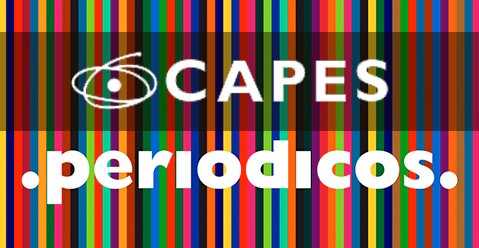Memory echoes
writing the helf as a way of denouncement in “Estátua de Sal” by Maria Ondina Braga
DOI:
https://doi.org/10.30620/pdi.v13n1.p239Keywords:
Maria Ondina Braga, Portuguese literature in the Orient, Macao’s literature, Feminine literature, Writing the selfAbstract
Maria Ondina Braga (1932-2003), an itinerant and contemporary Portuguese writer, frequently drew on the themes of travel and alterity for her literary aesthetics. Along these thematic lines, the work under study, Estátua de Sal (1983), constitutes a romanticized autobiography where Ondina Braga’s biographical experience is fictionalized, literarized and, above all, self-analyzed. Focusing exclusively on Maria Ondina Braga, the following is the purpose of this article: (i) reviewing aspects of literary theory by taking into consideration, on the one hand, the specifics of such a writing and, on the other hand, broadly presenting the work; (ii) then, presenting two main objectives. As the first step, the architecture of memory is being problematized, or in other words, how memory is positioned and shared within the narrative space; as a second step, an analysis of selected textual excerpts is being carried out; the third step involves revisiting and sharing the inner world of the character through a reading perspective that considers writing to be a space for condemning and criticizing social and cultural forces.
[Received on: January 29, 2023 - Accepted on: June 10, 2023]
Downloads
References
AHAD, H.; KUMAR, C.; REDDY, K. & MAHESH, K. (2010). Somnambulism Sleep walking disease. JITPS, 1 (4), 175-180.
AGUIAR E SILVA, V. (1989). O texto literário e o ensino da língua materna. AA.VV, Congresso sobre investigação e ensino do Português. Lisboa: Ministério da Educação.
ALVES, A. C. (2022). Cultura chinesa uma perspetiva ocidental. Coimbra: Almedina.
AZEVEDO, F. (2012). Metodologia da língua portuguesa. Porto: Porto Editora.
BAKHTIN, M. (1986). Speech genres and other late essays. Austin: The University of Texas Press.
BRAGA, M. O. (1983). Estátua de sal. Lisboa: Ulmeiro.
BRAGA, M. O. (1965). Eu vim para ver a terra. Lisboa: Agência do Ultramar.
D'ALTE, P. (2022). Figurações da mulher na literatura de expressão portuguesa a Oriente: os casos de Luís Cardoso e de Senna Fernandes. E-Rei, Revista de Estudos interculturais, 10, 1-22.
D'ALTE, P. (2021). Figurações da mulher nos contos macaenses de Conceição, Ondina Braga e Senna Fernandes. Asas da palavra, 18, 2, 20-35.
GENETTE, G. (2009). Paratextos editoriais. São Paulo: Ateliê Editorial.
EDWARDS, J. (2017). The folly of looking back in fleeing out of Sodom. Ontario: Devoted Publishing.
ELIADE, M. (2016). O sagrado e o profane. A essência das religiões. Lisboa: Relógio d’Água.
FERNANDES, R. M. (1993). Catábase ou descida aos infernos: alguns exemplos literários. HVMANITAS, XLV, 347 359.
GIL, J. (1993). O espaço interior. Lisboa: Editorial Presença.
GUSDORF, G. (1991). Les écritures du moi. Lignes de vie 1. Paris: Ed. Odite Jacob.
HALL, S. (2003). A identidade cultural na pós-modernidade. Rio de Janeiro: DP&A.
HARD, R. (2004). The Routledge handbook of Greek mythology. London: Routledge.
JUNG, C. (1996). The archetypes and the collective unconscious. London: Routledge.
LAMAS, E; BOTELHO, A. & CASTELO BRANCO, M. (2000). Dicionário de metalinguagens da didáctica. Porto: Porto Editora.
LEVINAS, E. (2012). Deus, a Morte e o Tempo. Lisboa: ed. 70.
LEVINAS, E. (1969). Totality and Infinity: An essay on exteriority. Pittsburg: Duquesne University Press.
LIMA, I. P. (1989). Para uma poética da suspensão em Maria Ondina Braga A casa suspensa uma novela exemplar. Letras & Letras, 19.
MARTINS, O. J. C. (2021). Poética da relação em Maria Ondina Braga: viagem, auto-exílio e errância cosmopolita. In Moniz, A.; Pinheiro, J.; Coelho, L.; Sousa, A. & Cristina (coord.). Viagem e cosmopolitismo. Da ilha ao mundo. Famalicão: Húmus.
MERLEAU-PONTY, M. (2011). Fenomenologia da percepção. São Paulo: Martins Fontes.
PEDROSA, I. (1987). Maria Ondina Braga: ninguém conta três vezes como ela.... Jornal de letras, Artes e Ideias, 5-1-1987, p. 13.
PEREIRA, J. C. (2015). O delta literário de Macau. Macau: IPM.
REIS, C. (2008). O conhecimento da literatura introdução aos estudos literários. Lisboa: ed. Almedina.
ROMDENH-ROMLUC, K. (2011). Merleau-Ponty and phenomenology of perception. New York: Routledge.
ROSENBAUM, R. S.; KOHLER, S.; SCHACTER, D. L.; MOSCOVITCH, M.; WESTMACOTT, R. & BLACK, S. E. (2005). The case of K.C.: contributions of a memory-impaired person to memory theory. Neuropsychologia, 43, 989-1021.
SAUNDERS, M. (2010). Self-Impression: Life-writing, autobiografiction and the biographical forms. London: Fitzroy Dearborn.
SCHOLES, R. (1989). Protocolos de leitura. Lisboa: Edições 70.
SILVA, M. A. (2018). Avatares do feminino em Maria Ondina Braga. E-letras com vida, 1, 12-21.
SIMAS, M. & MARQUES, G. (2016). Contributos para o estudo da literatura de Macau. Macau: ICM.
SOUSA, I. C. (2011). A outra metade do céu. Escravatura e orfandade femininas, mercado matrimonial e elites mercantis em Macau (séculos XVI e XVII). Macau: Universidade de S. José.
WALSH, R. (2007). The rhetoric of fictionality: Narrative theory and the idea of fiction. Columbus: The Ohio State University Press.
TULVING, E. (2002). Episodic memory: from mind to brain. Annu. Rev. Psychol, 53, p. 1-25.
Published
How to Cite
Issue
Section
License
Copyright (c) 2023 Pontos de Interrogação – Journal of Cultural Criticism

This work is licensed under a Creative Commons Attribution-ShareAlike 4.0 International License.
Autores que publicam nesta revista concordam com o seguinte termo de compromisso:
Assumindo a criação original do texto proposto, declaro conceder à Pontos de Interrogação o direito de primeira publicação, licenciando-o sob a Creative Commons Attribution License, e permitindo sua reprodução em indexadores de conteúdo, bibliotecas virtuais e similares. Em contrapartida, disponho de autorização da revista para assumir contratos adicionais para distribuição não-exclusiva da versão do trabalho publicada, bem como permissão para publicar e distribuí-lo em repositórios ou páginas pessoais após o processo editorial, aumentando, com isso, seu impacto e citação.























